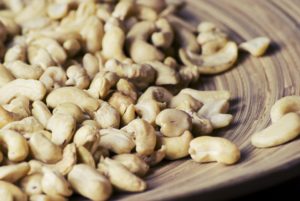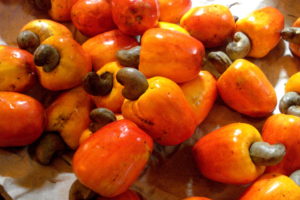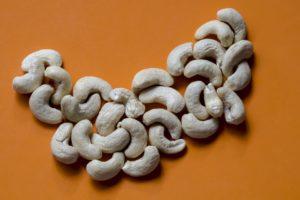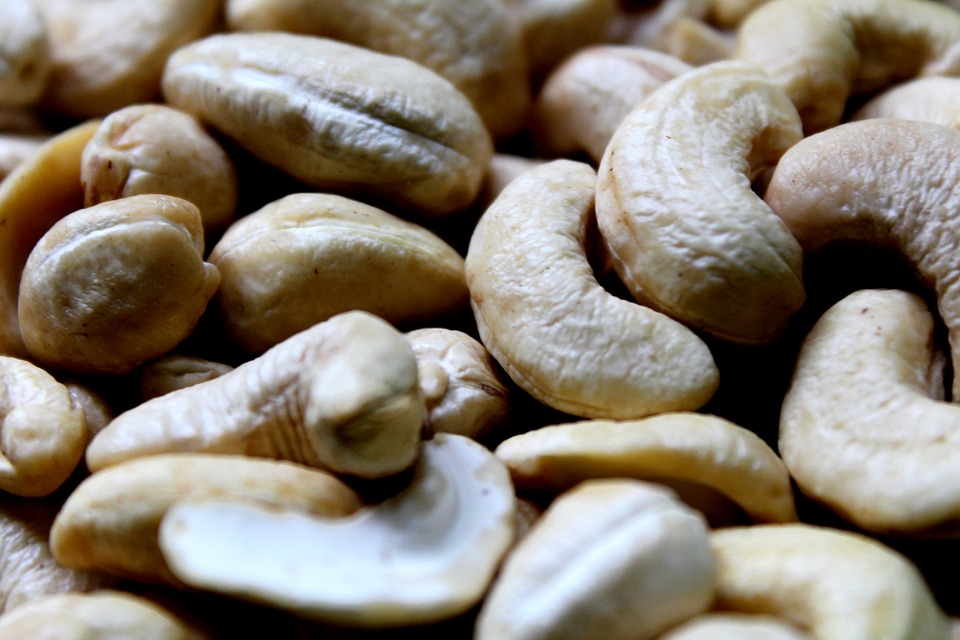Cashews are the kidney shaped seeds that adhere to the bottom of the cashew apple, which is the fruit of the cashew tree, which is native to the coastal areas of northeastern Brazil. The cashew tree made its way to the Goa, India, between 1560 and 1565 with Portuguese sailors. From there, it spread throughout Southeast Asia and eventually, Africa. Take a look below for 25 more fun and fascinating facts about cashews.
1. Cashews grow on 10 to 15 meter, or 32 to 50 feet, evergreen trees known as cashew trees, which belong to the Anacardiaceae family.
2. In 2010, Nigeria was the top producer of cashew nuts, producing 650,000 tonnes.
3. While in their shell, cashew nuts are surrounded by a toxic oil or resin that’s similar to urushiol called “anacardic acid,” which can burn or irritate the skin. They’re nearly always treated by roasting, boiling or steaming before they’re shelled.
4. Due to the proteins in the nuts, some people are allergic to cashew nuts as they are to other tree nuts. However, some people are allergic to them due to the trace irritants similar to “urushiol,” which is in poison ivy, pistachios and mangos.
5. The starch content of cashew nuts is about 23%, which is a lot higher than most other nuts and makes them suitable for thickening sauces.

6. Cashew nuts are eaten “raw”, which means that they’re generally heat treated, roasted, salted and as a spread, added to main meals like salads.
7. People who have a tendency to get kidney stones or have gallbladder issues may need to avoid or reduce their intake of cashews as they have oxalates, which can make their condition worse.
8. The true fruit of the cashew tree is a kidney shaped drupe that grows at the end of the cashew apple. The dupe develops first on the tree, and then the pedicel expands to become the cashew apple. Within the tree fruit is a single seed, which is often considered a nut, in the culinary sense.
9. Cashews are very nutritious and are packed with protein and essential minerals including copper, calcium, magnesium, iron, phosphorus, potassium, and zinc.
10. They also have vitamins such as vitamin C, vitamin B1, vitamin B2, vitamin B3, vitamin B6, folate, vitamin E, and vitamin K. Cashews also have a high content of oleic acid, which is an omega 9 fatty acid.
11. In Western countries, cashews are mainly eaten as a premium quality snack as they have a rich and buttery taste.
12. Cashews are commonly used in South and Southeast Asian cuisine. They’re a characteristic ingredient of numerous chicken and vegetarian dishes of southern India.
13. Cashew oil is a dark yellow oil used for cooking or as salad dressing. It’s made from pressed cashew nuts, typically broken chunks created during processing.

14. They can also be processed into cashew cheese or cashew butter, which is very similar to peanut butter.
15. The shell of the cashew seed can be used in many applications such as lubricants, waterproofing, paints and arms production, which started in World War II.
16. The cashew apple can be eaten fresh, cooked in curries, or fermented into vinegar, as well as an alcoholic drink. It’s also used to make preserves, chutneys and jams in some countries, such as India and Brazil.
17. In traditional Mayan medicine, the leaves or bark of cashew trees can be made into a tea that treats diarrhea.
18. It gets its English name from the Portuguese name for the fruit of the cashew tree “caju,” which itself is derived from the Tupian word “acaju,” which means “nut that produces itself.”
19. They’re rich in copper, which helps in the metabolism of iron, aids in the formation of red blood cells, and helps in keeping bones and the immune system healthy. It’s also important for the nervous and skeletal system of the body.
20. Cashews are a source of dietary iron, which is important for carrying oxygen around the body and aids in the functioning of enzymes and the immune system.

21. Before the seed is roasted, cashews are actually a shade of green.
22. Cashews are found in industrial products used as brake liners and paints.
23. The United States consumes over 90% of the world’s cashew crop.
24. November 23rd is National Cashew Day.
25. In Goa, the cashew apple is mashed and the juice extracted and kept for fermentation for a few days. Fermented juice then undergoes a double distillation process. The resulting beverage is called feni or fenny. It has about 40% to 42% alcohol.




